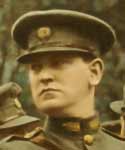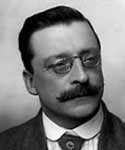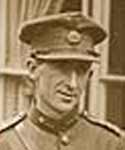The Irish Civil War was fought between the new Irish Free State government and the anti-treaty IRA. Many of these men had been close friends and comrades just months earlier in the Irish War of Independence.
Here are some brief descriptions of the key characters and groups that took part in the Irish Civil War.
Irish Free State
The Irish Free State was made up of the members of the IRA and Sínn Féin that were in favour of the Anglo-Irish Treaty. They formed the new Free State government and set about trying to run the country.
Several of the members were not completely happy with the terms of the agreement but believed that it was a solid base from which to move forward, with further negotiations to be made in the future.
Anti-Treaty IRA
The anti-treaty IRA, also known as the Irregulars or Republicans, were opposed to the treaty and split from the Irish Free Staters. They felt that the status as a free state within the dominion of the British Empire was unacceptable, and disrespectful to the men who had lost their lives in the Easter Rising. The anti-treaty IRA rebelled against the new government and started the Civil War.
Michael Collins

Michael Collins had signed the Anglo-Irish Treaty which split the IRA in two. He had to try and show that the Free State was capable of governing the country, but was desperate not to go to war with his former colleagues.
Collins only gave the order for his army to attack when he felt he had no other choice.
He was assassinated by Republican fighters after they opened fire on his vehicle in Cork. Rather than flee the scene, Collins ordered his men to get out of the car and fight. He was shot in the head in the ensuing gunfight.
Éamon de Valera
Éamon de Valera was opposed to the treaty. He immediately stepped down as President of the Republic and formed a new political party called Cumann na Poblachta (Republican Association).
De Valera also stated that he would serve in the anti-treaty army as a volunteer, and leave the military strategy to the more capable and experienced soldier Liam Lynch. He went on to become a leading Irish politician and hold the posts of both Taoiseach and President of Ireland.
Arthur Griffith

Arthur Griffith was the man who signed the treaty alongside Michael Collins. He thought the Free State should be quick to use force to shut down any resistance from the anti-treaty IRA in order to show its authority.
Griffiths died of a brain haemorrhage less than a year after signing the treaty. His death was almost certainly related to the stress he endured.
Liam Lynch

Liam Lynch was the commanding officer of the anti-treaty IRA during the Irish Civil War. He had fought in the War of Independence. Lynch was opposed to the seizure of the Four Courts and only got involved when the Free State government attacked.
He was arrested but released on the understanding that he would try and halt the anti-treaty resistance. Instead, he set up the defence of the Munster Republic, knowing that his army was inferior in number and resources to that of the Free State.
Lynch also gave the order for his troops to kill any member of the Free State government or army which led to a tit-for-tat series of atrocities carried out by both sides. He was killed when hit by Free State riflemen in a battle at the Knockmealdown Mountains.
Richard Mulcahy

Richard Mulcahy took over as commanding officer of the Free State Army after Michael Collins’ death. He had fought in the War of Independence and the Easter Rising.
Mulcahy oversaw the recovery of the Irish Free State after the death of their two leaders Collins and Griffith within 10 days of each other. He went on to have a long career in Irish politics.
Rory O’Connor
Rory O’Connor was the man that effectively started the Irish Civil War. He led a troop of anti-treaty IRA in seizing the Four Courts buildings in Dublin.
Eventually, he was arrested and sentenced to death. The man who gave the order for execution was Kevin O’Higgins, who had been a close friend before the war broke out.
O’Connor had actually been the best man at O’Higgins’ wedding before the two men’s friendship was ended by their political beliefs.
Irish Civil War – essential facts
